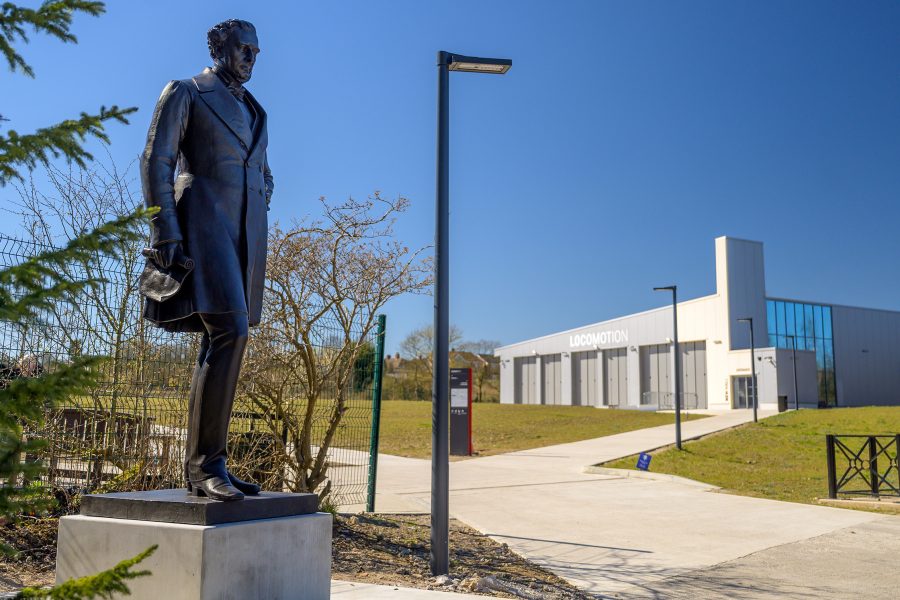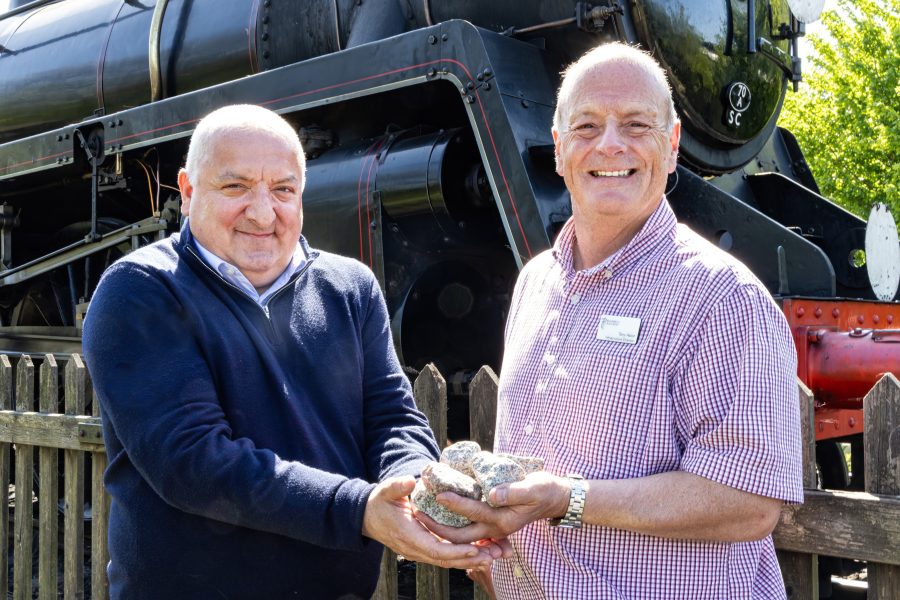
HS2 and Railway 200
The rail industry is uniting under the banner of ‘Railway 200’ to recognise the remarkable achievements of George Stephenson, pioneer of the first public railway linking Stockton and Darlington in 1825.
2025 will be filled with celebrations to mark the 200th anniversary of the modern railway and HS2 will play a pivotal role in showcasing what the future holds.
HS2 represents an exciting new chapter in Britain's 200-year-old railway story.
It will utilise the latest in rail technology and engineering to connect London and Birmingham with more reliable, faster and frequent services while supporting growing passenger demand by creating space on the existing network for more local, regional and freight services. This ensures that passengers travelling on our historic railways today will also enjoy better journeys in the future.
The new dedicated high-speed network will transform the passenger experience, with zero carbon journeys and environmentally friendly stations all part of the UK’s rail future.
Design, engineering and construction is supporting 30,000 jobs and advancing the UK’s knowledge and expertise in modern day rail systems and operations.
Laying the foundations for the expansion of new rail networks across the North and the Midlands, HS2 continues to act as a catalyst for economic growth and urban regeneration.
Our Railway 200 work
Robert Stephenson statue goes on display at Locomotion Museum
The historic bronze statue of Robert Stephenson, the son of the ‘father of the railways’ George Stephenson has gone on display at the Locomotion Museum in Shildon, County Durham. Since its removal from the piazza at London’s Euston station as part of the HS2 redevelopment in October 2020, the statue of the railway pioneer has been kept by HS2 in safe storage.
Now, HS2, Network Rail and the Science Museum Group, the operator of the Locomotion Museum in Shildon, have agreed a loan which will see the 150 year old monument on display to the public for the next 10 years. The iconic statue will return to Euston once work to construct the new HS2 station and redevelop the existing Euston station is complete.
Robert Stephenson is regarded as one of the greatest engineers of all time. Building on the achievements of his father, Robert designed the pioneering Rocket locomotive and was the chief engineer for the London and Birmingham Railway, which opened in 1838 as the first railway into London. His work helped establish the UK’s railway system and he went on to engineer railways and railway bridges worldwide in Europe, Canada and Egypt.
The loan coincides with ‘Railway 200’ – the celebration of 200 years of the modern railway. Nationwide celebrations are taking place to recognise the achievements of George and Robert Stephenson, who pioneered the first public railway linking Stockton and Darlington in 1825. This railway passes through Shildon, which is recognised as being the first Railway town and a fitting location for the statue to be displayed.
Donating 4,000 tonnes of ballast to Bluebell Railway
HS2 is donating thousands of pieces of ballast to the Bluebell Railway in West Sussex.
Some 4,000 tonnes of ballast – enough to fill an Olympic-size swimming pool – was used by HS2 in specially constructed sidings while tunnelling work was carried out at West Ruislip. The sidings were used to bring 59,000 concrete tunnel ring segments, which were used to construct the Northolt Tunnel West.
By reusing the material, it eliminates the need for unnecessary treatment and transport of the material for waste disposal.
The ballast will be used to reopen platform 1 at Horsted Keynes station (perhaps better known as Downton Abbey station), which has been out of use since 1914. This means that when the platform is brought back into service in May, the Bluebell Railway will have four operational platforms at Horsted Keynes.
The donated ballast will also be used to relay an adjacent siding, which will be used as a display area for railway vehicles for the entire event throughout the summer.

Slide 1 of 2: The Robert Stephenson statue in its new position at the Locomotion Museum Shildon, County Durham.

Slide 2 of 2: Donated ballast to Bluebell Railways will be used to reopen platform 1 at Horsted Keynes station.